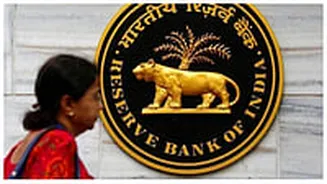RBI's Strategic Refusal
The Reserve Bank of India, in a recent maneuver, chose to reject the bids for 7-year Government Securities, commonly known as G-secs. This decision, a reflection
of the evolving dynamics within the bond market, was primarily due to the insistence of participants on higher yields. In essence, potential buyers sought a greater return on their investment than the RBI was willing to offer at that particular moment. This situation underscores the delicate balance the central bank maintains in managing the government's borrowing needs while simultaneously trying to keep borrowing costs in check. The rejection isn't a commonplace occurrence, and often signals the RBI's stance on prevailing interest rate expectations and its intent to navigate market conditions carefully. This is a crucial aspect in the overall economic landscape.
Yields and Market Dynamics
At the core of the RBI's rejection lies the interplay of yields, which are essentially the returns investors expect from their investments, and the overall market sentiments. The demand for higher yields on the 7-year G-sec suggests that investors may have perceived greater risks or anticipated shifts in the market that merited higher compensation. These can be driven by a variety of factors, including inflation expectations, projections about the economic outlook, and the strategies of global investors. The RBI's decision to reject the bids is therefore a response to these dynamics. If the RBI had accepted the bids at a higher yield, it would have resulted in increased borrowing costs for the government. This could further impact the fiscal position and influence spending plans. The decision signifies the RBI's endeavor to strike a balance between borrowing costs and market stability.
Impact on Investors
The RBI's decision had various implications for investors in the bond market. Those who were hoping to acquire the 7-year G-sec at the initially offered yields found their bids rejected, which could have led them to reassess their investment strategies. Furthermore, the event might have influenced the yields of other government securities across various tenures. This in turn could affect the overall yield curve, which depicts the relationship between the yields and maturities of bonds. For some investors, this may prompt a shift towards alternative investment avenues, while others might adjust their expectations for future yield movements. Ultimately, the actions of the RBI, particularly in the G-sec market, have a ripple effect that touches on investment decisions and the management of fixed-income portfolios.
Government's Borrowing Strategy
The rejection of bids impacts the Government's borrowing strategy. The Government relies on the issuance of G-secs to finance its spending programs. When the RBI declines bids due to high yield demands, it becomes necessary for the government to reassess its borrowing plans. This could potentially lead to delays in borrowing or require the government to explore alternative funding sources, such as short-term treasury bills or other financial instruments. The central bank's actions and the government's responses are closely intertwined, shaping fiscal management. The government's fiscal targets, including its fiscal deficit, may be indirectly affected as a result. A delay in borrowing might necessitate fiscal adjustments or changes in expenditure plans.
Broader Economic Implications
The RBI's decision, though specific to the 7-year G-sec, resonates across the broader economic environment. It has an impact on the overall cost of borrowing in the economy. Higher yields demanded by investors can potentially translate to elevated lending rates for businesses and consumers, influencing investment and consumption patterns. Moreover, this action is a signal of the central bank's monetary policy stance. It sends cues about the RBI's assessment of inflation, growth prospects, and its willingness to influence the bond market. The bond market, with its inherent sensitivity to changes in the economic outlook and policy decisions, serves as an important reflection of the state of the economy. Through its actions, the RBI influences confidence levels and guides the direction of market participants.
Future Market Outlook
Looking forward, the developments in the G-sec market will likely be closely monitored by economists, investors, and policymakers alike. The market's reaction to the RBI's actions, coupled with prevailing economic conditions, will shape future yields. Also, any further actions taken by the central bank will have the potential to impact investor sentiment and market trends. The government's borrowing needs, the rate of inflation, and the overall economic growth trajectory will be critical factors that will drive the G-sec market. These elements will shape the future and influence the strategies of market participants, with the potential to impact long-term economic prospects. The interplay between these dynamics will remain a key focus for those involved in financial markets and economic analysis.













